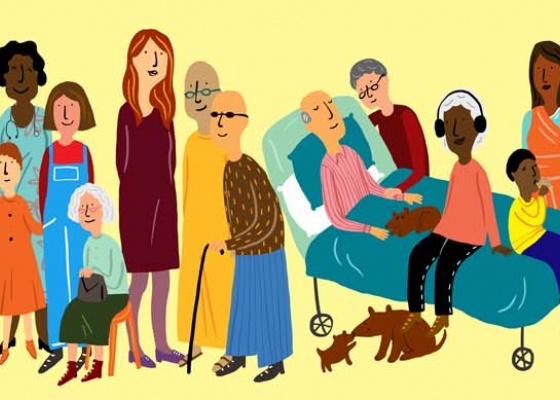Under-nutrition in later life is everyone’s business
It’s important that all Health Care Professionals can recognise the signs of unintended weight loss and know what to do if someone is at risk, wherever they work, in the community care home, older people's own homes or hospitals.
The Malnutrition Task Force’s report, The State of the Nation: Older People and Malnutrition in the UK Today, provides an overview of the scale of the challenge and how well it’s currently being addressed across sectors and settings. (This publication will be regularly updated so will also contain the latest stats for your information.)
Understanding issues
It is estimated that around one in ten people over the age of 65 are malnourished or are at risk of malnutrition - that’s over one million older people in the UK today.
Malnutrition (undernutrition) is characterised by low body weight or weight loss, which simply means that some older people are not eating well enough to maintain their health and well-being. Seemingly overweight people can also feel the physiological effects of unintentional weight loss.
Weight loss is often unintentional and goes unrecognised until malnutrition starts to seriously undermine someone’s health and well-being.
Undernutrition will affect health and wellbeing, increasing hospital admissions, and can lead to long-term health conditions for otherwise healthy and independent older people.
Why is this happening?
Awareness of undernutrition and risk factors amongst older people, their families, and many health and care professionals remains low. There is also patchy availability of care and support services to prevent malnutrition, or identify and treat it when it does occur.
The myth perpetuates that it is ‘normal’ to get thin as you get older. This is not helped by health messages and public health policies that are preoccupied with reducing levels of obesity so that weight loss is often seen as desirable. There is little recognition that widely publicised advice about diet and nutrition is often unsuitable for older or more vulnerable members of society. Yet malnutrition is largely preventable and treatable.
Risk factors
The reasons why an older person might become malnourished are varied. Often there are multiple causes. The causes and consequences of malnutrition are often interlinked and, in some cases, can develop into a vicious cycle.
The reasons why a person becomes malnourished can be split into three main categories:
1. Medical risks
Malnutrition can be a consequence of a particular disease (for example cancer or chronic liver disease), or a side effect of a condition or medication, and can be prevented or treated with proper care and support. Those at risk include people with dementia, cancer, COPD, dysphagia or older people at risk of poly-pharmacy, which can lead to a reduction in appetite or alter the taste of food.
2. Physical risks
Physical or disability-related risk factors can occur for many reasons and may be related to underlying health problems or a more specific physical difficulty. This can include arthritis, sight loss or limited mobility. Dentition is also a major factor linked to malnutrition in older people as pain, loose teeth or denture problems can prevent people from eating well. Read more about oral health.
3. Social risks
Social risk factors that link to unintentional weight loss are often the most complex and range from practical constraints to people’s interest in food and motivation to eat well. These include bereavement, social isolation, and loneliness, living on a low income, having a caring responsibility and understanding or attitudes around weight loss and nutrition.
UK Malnutrition Week
We are asking for your help to get as many individuals working in health and social care settings to screen for malnutrition using ‘MUST’ and to record any nutritional care a person is given during. Details regarding activities for #UKMAW23 will be released soon...
For more information about risk factors for undernutrition, see The State of the Nation: Older People and Malnutrition in the UK Today.
Read more
National standards for healthcare food and drink

